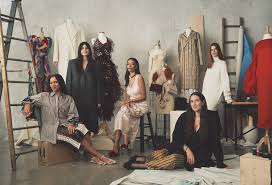In the world of fashion, designer clothes have long been synonymous with luxury, exclusivity, and status. From the runways of Paris to the streets of New York, designer brands like Chanel, Gucci, Louis Vuitton, and Prada have become household names, representing not just clothing, but a lifestyle. However, the question remains: are designer clothes worth the hype, or are they merely a symbol of excess in a world grappling with economic inequality and environmental concerns? This article delves into the allure of designer clothes, their cultural significance, and the ethical considerations surrounding their production and consumption.

The Allure of Designer Clothes
Designer clothes are often associated with superior quality, craftsmanship, and attention to detail. Unlike mass-produced garments, designer pieces are typically created by skilled artisans who dedicate hours, if not days, to perfecting a single item. From the selection of premium fabrics to the intricate stitching and embellishments, every aspect of a designer garment is meticulously crafted to ensure it stands out from the rest.
One of the key appeals of designer clothes is their exclusivity. Many luxury brands produce limited quantities of each item, making them highly sought after. Owning a designer piece is not just about wearing a beautiful garment; it’s about possessing something unique that few others have. This exclusivity is further amplified by the high price tags attached to designer clothes, which serve as a barrier to entry for most consumers. For those who can afford them, designer clothes are a way to signal wealth, taste, and social status.
The Cultural Significance of Designer Fashion
Designer clothes have played a significant role in shaping cultural trends and movements. Throughout history, fashion designers have used their creations to challenge societal norms, express political views, and celebrate individuality. For example, in the 1920s, Coco Chanel revolutionized women’s fashion by introducing comfortable, practical clothing that broke away from the restrictive corsets of the past. Similarly, in the 1960s, designers like Mary Quant and André Courrèges embraced the youthquake movement, creating bold, futuristic designs that reflected the era’s spirit of rebellion and innovation.
Today, designer fashion continues to influence popular culture, with celebrities and influencers often serving as ambassadors for luxury brands. Red carpet events, fashion weeks, and social media platforms have become stages for showcasing the latest designer creations, further fueling their desirability. For many, wearing designer clothes is a way to align themselves with the glamour and sophistication associated with these brands.
The Ethical Dilemma: Luxury vs. Sustainability
While designer clothes are undeniably appealing, their production and consumption raise important ethical questions. The fashion industry is one of the most polluting industries in the world, with significant environmental impacts ranging from water pollution to textile waste. Luxury brands, despite their emphasis on quality and craftsmanship, are not immune to these issues. In fact, the production of high-end garments often involves the use of exotic materials, such as fur, leather, and rare fabrics, which can have devastating consequences for the environment and animal welfare.

In recent years, there has been growing awareness of the need for sustainable fashion, prompting some designer brands to adopt more eco-friendly practices. For example, Stella McCartney has long been a pioneer in sustainable luxury, using vegan materials and ethical production methods. Similarly, Gucci has committed to becoming carbon neutral, while Burberry has pledged to stop destroying unsold merchandise. However, these efforts are still the exception rather than the rule, and many luxury brands continue to prioritize profit over sustainability.
Another ethical concern is the exploitation of labor in the production of designer clothes. While luxury brands often market themselves as purveyors of artisanal craftsmanship, the reality is that many of their garments are produced in factories where workers are paid low wages and subjected to poor working conditions. This disconnect between the glamorous image of designer fashion and the harsh realities of its production has led to calls for greater transparency and accountability within the industry.
The Psychological Impact of Designer Clothes
Beyond their aesthetic and cultural significance, designer clothes can also have a profound psychological impact on both the wearer and the observer. For the wearer, donning a designer outfit can boost confidence, self-esteem, and a sense of belonging. Studies have shown that clothing can influence our mood and behavior, a phenomenon known as “enclothed cognition.” Wearing a designer piece, with its association with luxury and success, can make the wearer feel more powerful and capable.
On the other hand, the obsession with designer clothes can also have negative psychological effects. The pressure to keep up with the latest trends and maintain a certain image can lead to financial stress, anxiety, and even compulsive shopping behaviors. For some, the desire to own designer clothes becomes a form of social competition, where self-worth is tied to material possessions. This can create a cycle of consumption that is both financially and emotionally draining.

The Future of Designer Fashion
As the fashion industry continues to evolve, the future of designer clothes will likely be shaped by a combination of tradition and innovation. On one hand, there will always be a demand for timeless, high-quality garments that reflect the artistry and heritage of luxury brands. On the other hand, the growing emphasis on sustainability and ethical practices will push designers to rethink their approach to fashion.
One potential direction for the future of designer fashion is the rise of “slow fashion,” which emphasizes quality over quantity and encourages consumers to invest in fewer, more meaningful pieces. This approach aligns with the values of many luxury brands, which have long prided themselves on their craftsmanship and attention to detail. By embracing slow fashion, designer brands can position themselves as leaders in the movement towards a more sustainable and ethical fashion industry.
Another trend to watch is the increasing use of technology in fashion. From 3D printing to virtual reality, technology is opening up new possibilities for designers to create innovative and personalized garments. For example, some brands are experimenting with made-to-order clothing, which reduces waste by producing garments only when they are purchased. Others are using blockchain technology to provide transparency in their supply chains, allowing consumers to trace the origins of their clothes and ensure they were produced ethically.
Conclusion
Designer clothes are more than just garments; they are symbols of creativity, status, and cultural identity. While their allure is undeniable, it is important to consider the ethical implications of their production and consumption. As consumers, we have the power to shape the future of fashion by supporting brands that prioritize sustainability and ethical practices. By doing so, we can ensure that the world of designer fashion remains not only beautiful but also responsible and inclusive.
In the end, the true value of designer clothes lies not in their price tags, but in the stories they tell and the impact they have on the world around us. Whether as a form of self-expression, a statement of social status, or a work of art, designer clothes will continue to captivate and inspire us for generations to come.









